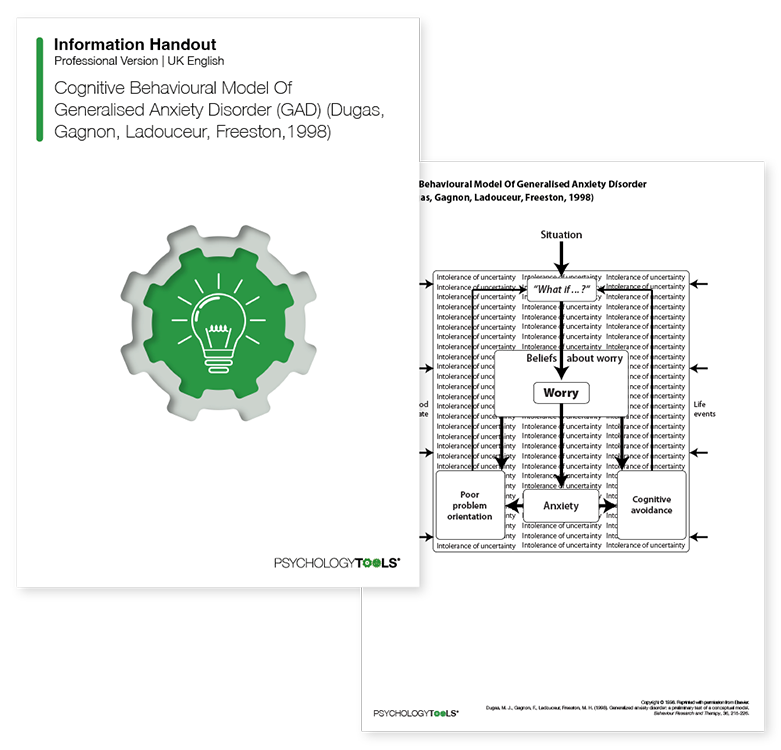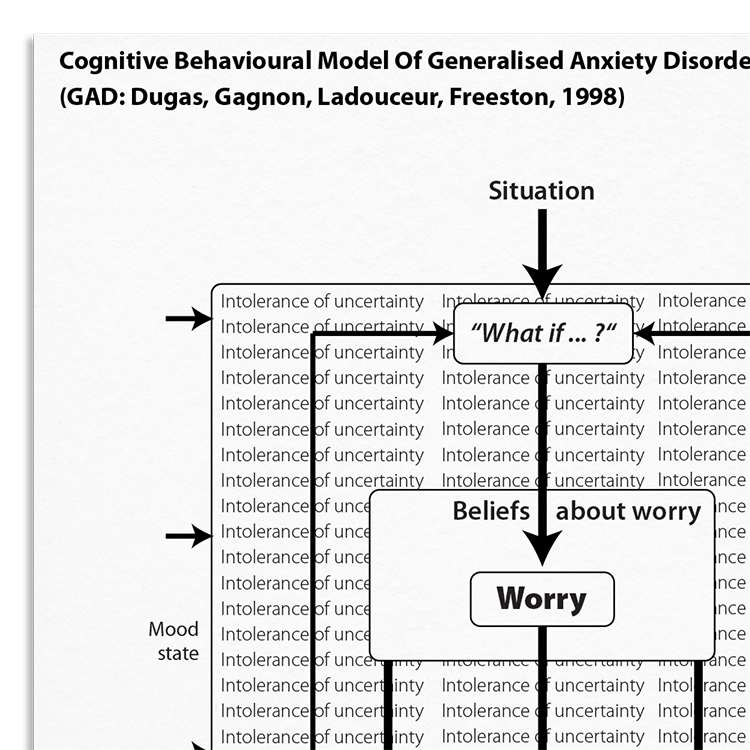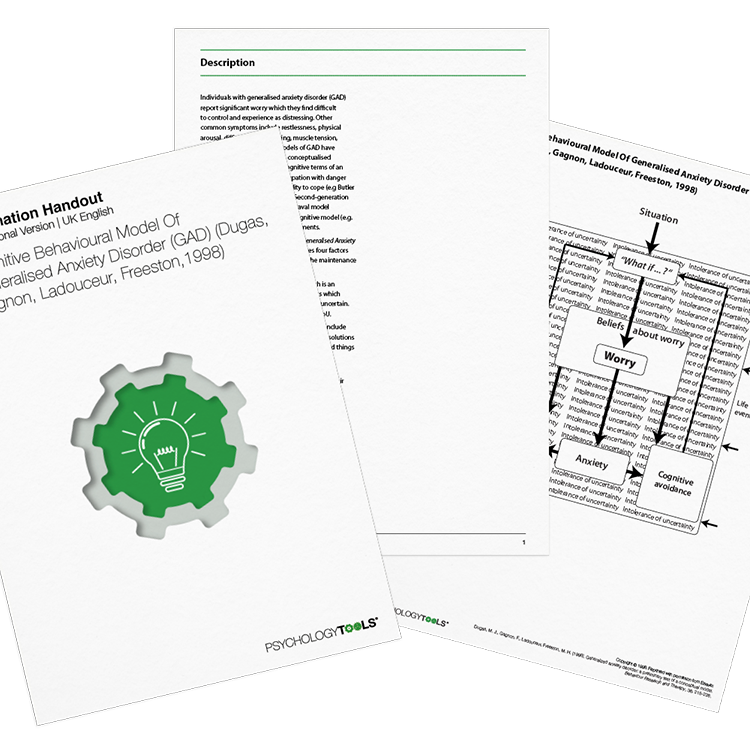Professional version
Offers theory, guidance, and prompts for mental health professionals. Downloads are in Fillable PDF format where appropriate.
A licensed copy of Dugas and colleagues (1998) cognitive behavioral model of generalized anxiety disorder (GAD).

Offers theory, guidance, and prompts for mental health professionals. Downloads are in Fillable PDF format where appropriate.

Individuals with generalized anxiety disorder (GAD) report significant worry which they find difficult to control and experience as distressing. Numerous models of GAD have been developed. The Cognitive Behavioral Model Of Generalized Anxiety Disorder (GAD) presented here (the 'Laval model') describes four factors, including intolerance of uncertainty, which are thought to be important in the maintenance of GAD.
Understanding the underpinnings of generalized anxiety disorder (GAD) is important for effective intervention. This resource helps clinicians to:
Designed to help clients understand and learn more about GAD.
Understand more about the cognitive behavioral model of generalized anxiety disorder (GAD).
Use the model as a template to organize your case formulations.
Use your knowledge of the model to explain maintenance processes to clients.
Engage clients in discussions about their beliefs and behaviors.
Customize interventions based on individual maintenance mechanisms.
Use in supervision to discuss case conceptualizations and treatment plans.
Individuals with generalized anxiety disorder (GAD) report significant worry which they find difficult to control and experience as distressing. Other common symptoms include restlessness, physical arousal, difficulty concentrating, muscle tension, and poor sleep. Numerous models of GAD have been developed. Early models conceptualized GAD in the relatively generic cognitive terms of an individual’s heightened preoccupation with danger and underestimation of their ability to cope (e.g Butler et al, 1987; Borkovec et al, 1993). Second-generation conceptualizations including the Laval model (presented here) and Wells’ metacognitive model (e.g. Wells, 1999) are significant advancements.
The Cognitive Behavioral Model Of Generalized Anxiety Disorder (GAD) presented here describes four factors which are thought to be important in the maintenance of GAD. These include intolerance of uncertainty (IoU), positive beliefs about worry, negative problem orientation, and cognitive avoidance.

Just enter your name and email address, and we'll send you Cognitive Behavioral Model Of Generalized Anxiety Disorder (GAD: Dugas, Gagnon, Ladouceur, Freeston, 1998) (English US) straight to your inbox. You'll also receive occasional product update emails wth evidence-based tools, clinical resources, and the latest psychological research.
Working...
This site uses strictly necessary cookies to function. We do not use cookies for analytics, marketing, or tracking purposes. By clicking “OK”, you agree to the use of these essential cookies. Read our Cookie Policy